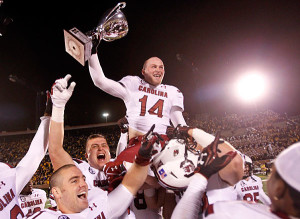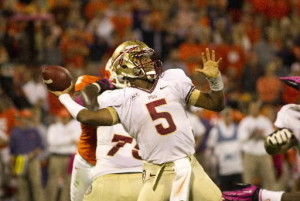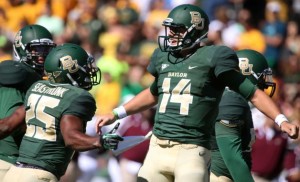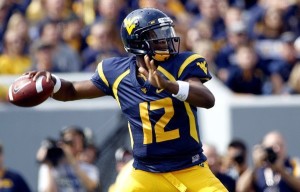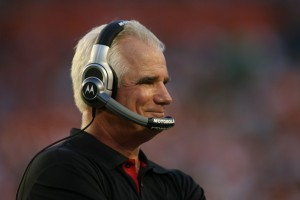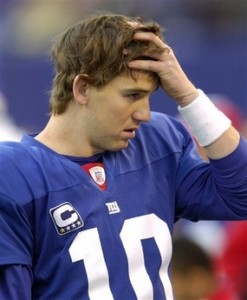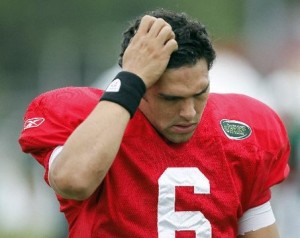Entering week 12, there were 7 teams with legitimate paths to the national championship. The four undefeated teams came in with cupcake games, while two of the three one-loss teams had tough challenges. So what happened?
- Alabama was a 23-point favorite at Mississippi State (53rd in the week 11 SRS ratings). It wasn’t pretty, but the Crimson Tide left Starkville with a 20-7 win.
- Florida State also simply needs to win out, and the Seminoles hosted Syracuse (69). FSU was a 37.5-point favorite, and the game wasn’t even that close. After one quarter, Jameis Winston was 10 for 10 for 170-yards, and the Seminoles were up 28-0, en route to a 59-3 win. That was the largest win of the week, and gives FSU four of the top nine single-game SRS scores of the season.
- Behind the undefeated behemoths of the SEC and ACC are undefeated teams in two other major conferences: the Big 10 and Big 12. Ohio State was a 33.5-point favorite in Illinois (#74), while Baylor was a 27.5 point favorite against Texas Tech (#41) in Arlington. Ohio State jumped out to a 28-0 lead against Illinois, and won 60-35, but the game got a little close in the middle. It was only 35-21 in the third quarter, and 44-28 in the 4th, but Carlos Hyde and Braxton Miller (combined 40 carries for 430 yards and 5 touchdowns) were too much for the Illini to handle.
- Baylor fell behind 14-0 early, but still managed to cover the spread after winning 63-34. After the hot start from the Red Raiders, the Bears scored 8 touchdowns in the next 36 minutes of game time. Quarterback Bryce Petty “struggled” in this game, which means he only completed 17 of 31 passes, but still picked up 335 yards and three touchdowns (to go along with two rushing scores). So far, the Bears have been up to the challenge as the meat of the schedule arrived in November, although the toughest test comes next week in Stillwater. The crazy part is that if it wasn’t for West Virginia, this Oklahoma State-Baylor game would be as hyped as any Big 12 game in recent memory: two explosive offenses, two undefeated teams, a B12 title and a possible BCSNCG berth on the line.
- Three one loss teams were also knocking on the door. Stanford had the hardest SOS through 11 weeks of any team with no more than one loss, and the Cardinal owned the best win (as measured purely by SOS) of any team in the country. Stanford traveled to Los Angeles to face a USC team (#20) that had gone 4-1 since interim head coach Ed Orgeron took over for Lane Kiffin. Stanford was a 3.5-point favorite over the Trojans, but a strong fourth quarter gave USC the win. Kevin Hogan threw two late interceptions, and kicker Andre Heidari hit a 47-yarder in the final minute, completing the upset for Coach O and the Trojans. We can officially rule Stanford out of the BCS race, and absent any upsets, pencil in Oregon-Ohio State in the Rose Bowl.
- Two one-loss SEC teams entered week 12 with quasi control-their-own-destiny fates. Missouri and Auburn know that winning out means an SEC championship and a win over Alabama. No one really knows if that would be enough to vault them into the BCS National Championship Game, but for idle MIZZOU, the debate will have to wait another week (the bye week comes at an opportune time, with Ole Miss and Johnny Manziel and Texas A&M coming up the next two weeks).
- Auburn was a three-point home favorite against Georgia (#25), and got off to a hot start, outgaining Georgia 149 to 4 and grabbing a 10-0 lead after the first quarter. With 10 minutes left, the Tigers led 37-20, but three touchdowns in eight minutes — the last on a run by Aaron Murray on 4th-and-goal that just barely (if at all) got in — gave Georgia a 38-37 lead. All looked lost, until on 4th and 18, Nick Marshall threw a 73-yard touchdown to Ricardo Louis on the play of the year.
It didn’t take the straightest route, but after week 12, the national picture barely changed. The Iron Bowl in two weeks will be the de facto SEC West Championship Game, but more importantly it could be a quarterfinal matchup for the national title. The winner of Alabama/Auburn goes to the SEC Championship Game, which — if Missouri wins out — may be a de facto semifinal game. Whether a one-loss Auburn/Missouri gets in over an undefeated Baylor or Ohio State is tough to say, of course, although both of those teams could have a loss by then. And don’t worry: if either set of Tigers can upset Alabama, we will surely hear about how dominant the SEC is, which is very hard to argue.
[continue reading…]

